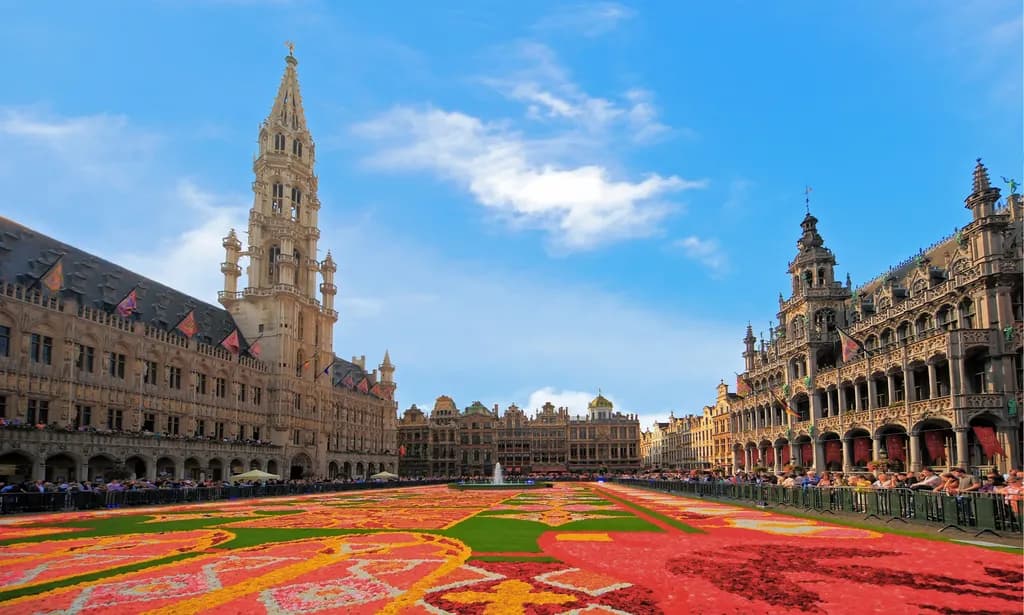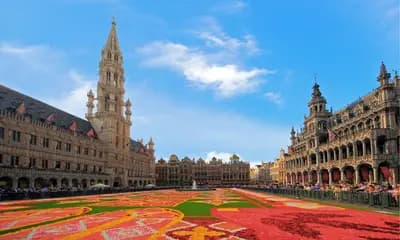Summer Travel Guide: Top Destinations & Best Times to Visit
Discover the best summer destinations! Our guide covers weather, activities, budget tips, and booking advice for your perfect warm-weather getaway.
Read More →Discover the perfect time to explore Brussels! From charming spring blooms to cozy winter markets, find out when to experience Belgium's vibrant capital.

User created page with UploadWizard

Get detailed weather data, best times to visit, and local insights on our comprehensive destination guide.
View Brussels, Belgium Guide →🌟 Planning your next adventure?
Find the best deals on flights, hotels, and travel packages at Trip.com.
Brussels, the heart of Belgium and the de facto capital of Europe, offers a captivating blend of history, culture, and culinary delights. Deciding on the best time to visit Brussels depends on your preferences, but each season brings its unique charm.
Spring is a truly magical time to explore Brussels. The city sheds its winter coat, revealing vibrant parks and blossoming trees. The weather is generally mild and pleasant, perfect for leisurely strolls through its picturesque streets. Expect average temperatures ranging from 10°C to 17°C (50°F to 63°F). This is an ideal time to visit for those who prefer comfortable exploration without the peak summer crowds. Consider a day trip to the nearby Bruges to witness its canals adorned with spring flowers.
Summer in Brussels is characterized by long, sunny days and a buzzing atmosphere. This is peak tourist season, with numerous outdoor festivals, concerts, and events taking place. Temperatures typically range from 15°C to 25°C (59°F to 77°F), though heatwaves can occur. While it's a fantastic time for outdoor activities and soaking up the city's energy, be prepared for larger crowds and higher accommodation prices. If you enjoy lively city breaks, you might also consider visiting Amsterdam during this period for its summer buzz.
As the summer heat subsides, autumn paints Brussels in a beautiful palette of reds, oranges, and yellows. The weather remains agreeable for sightseeing, with temperatures between 10°C and 18°C (50°F to 64°F). This shoulder season offers a fantastic balance of pleasant weather and fewer tourists than summer. It's a wonderful time to explore museums and enjoy the cozy ambiance of its cafes. Autumn in Brussels also coincides with truffle season, a culinary treat!
Winter in Brussels is all about festive cheer and a cozy atmosphere. From late November onwards, the city transforms with twinkling lights and the renowned Christmas markets, offering a truly magical experience. Temperatures can drop to between 0°C and 7°C (32°F to 45°F), so pack warm layers. While days are shorter, the city's indoor attractions, like world-class museums and charming chocolate shops, provide ample warmth and enjoyment. If you love festive markets, don't miss the opportunity to also explore the Christmas markets in Cologne.
Belgians are known for their politeness and appreciate punctuality. A simple 'Bonjour' (hello) or 'Merci' (thank you) goes a long way. Belgians are proud of their culinary heritage, especially their beer, chocolate, and fries. Don't be afraid to strike up conversations in cafes or bars; locals are generally friendly and happy to share their city.
Brussels can be explored on various budgets. Here's a general idea of costs:
For more budget-friendly travel inspiration, check out our guides to Lisbon or Budapest.
Brussels boasts an efficient and well-connected public transportation system:
Your choice of accommodation will depend on your budget and desired atmosphere:
Brussels is a foodie paradise! Be sure to indulge in:
Brussels is generally a safe city for tourists. However, like any major urban center, it's wise to be aware of your surroundings:
Enjoy your unforgettable journey to Brussels!
Planning your brussels belgium adventure? Enhance it with a customizable private tour guide via GoWithGuide—perfect for exploring beyond the city.
💡 Travel Tip: To make planning simple, you can search flights, hotels, and packages all in one place on Trip.com.
Discover the best summer destinations! Our guide covers weather, activities, budget tips, and booking advice for your perfect warm-weather getaway.
Read More →Discover the perfect time to experience Granada's magic, from the Alhambra's glow to flamenco's passion. Plan your unforgettable Spanish adventure!
Read More →Plan your perfect Dubai trip! Discover the best time to visit, top attractions, cultural insights, and budget tips for an unforgettable UAE adventure.
Read More →